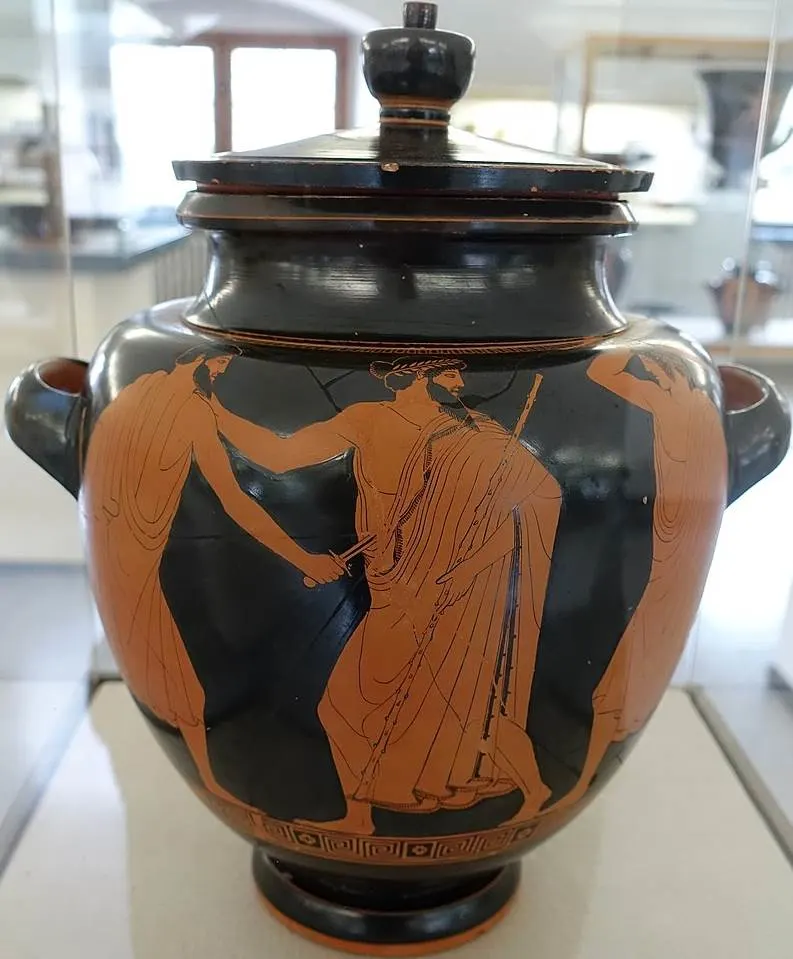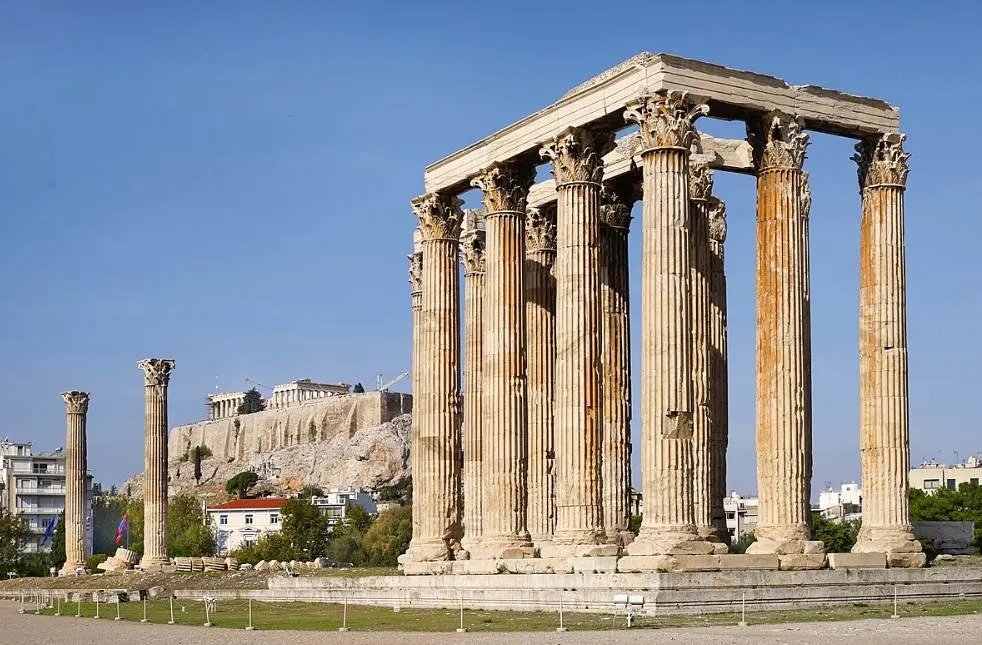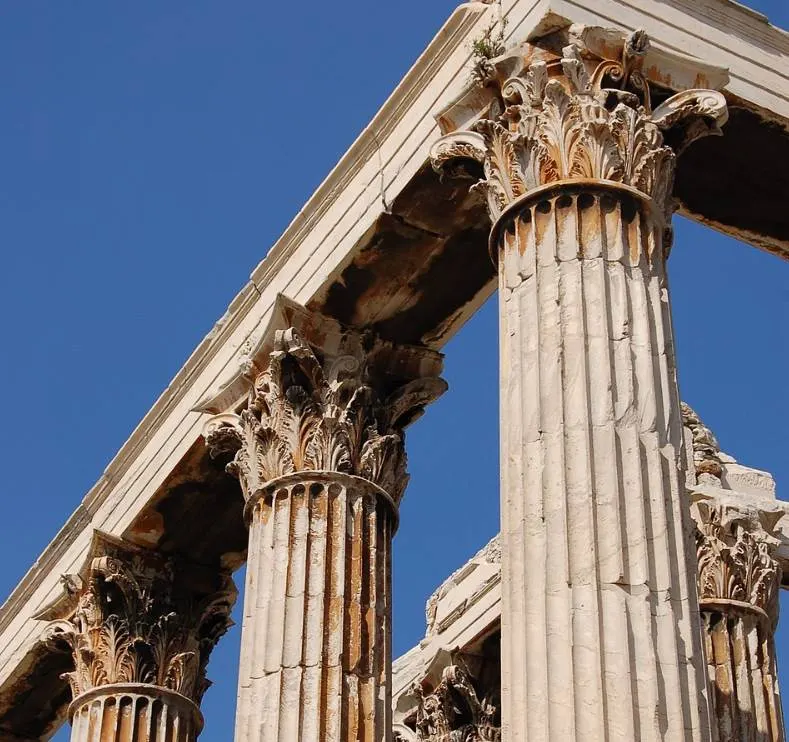The sheer size of the megaprojects that were constructed in ancient times still baffles us today. This definitely applies to Ancient Greek temples, although many lie in ruins.
It’s hard to imagine how massive blocks of marble and columns were erected without the use of modern machines.
The remaining fragments of a huge temple in Athens provide a glimpse of the labor that must have been involved to build this amazing structure.
Let’s take a closer look at some of the most interesting facts about the Temple of Olympian Zeus, a former temple that has an extensive history.
1. Its located in the heart of the modern city of Athens
The Temple of Olympian Zeus is also known as the Olympieion or Columns of the Olympian Zeus.
The latter is a reference to the fact that only some columns of this immense former temple still stand today.
The temple is overlooked by the nearby Parthenon which dominates the Acropolis in the center of Athens, Greece. It’s situated only 500 meters (0.31 miles) to the southeast of this world-famous building.
The heart of the modern-day city is situated about 700 meters (0.43miles) to the north of the ruins of this incredible former temple.

2. The construction of the temple started in the 6th century B.C.
The construction of the temple started around 520 B.C. This was a period in ancient Greek history when the Athenian tyrants ruled in this area.

The project was started on the location of an even older temple dedicated to the Olympian Zeus that was completed in 550 B.C. by a tyrant named Pisistratus (600-527 B.C.).
His sons Hippias and Hipparchos simply demolished this temple so they could build the largest temple in the ancient world. They aimed to surpass both the temple of Heraion of Samos and the Temple of Artemis at Ephesus.
The construction started in 520 B.C. but it was halted when the tyranny was overthrown and Hippias was banished in 510 B.C.

3. There was a specific reason why it remained unfinished for over 300 years
The platform on which the temple was supposed to be constructed was erected and measured 41 meters (134 feet 6 inches) by 108 meters (354 feet 4 inches).
The original plan of the temple consisted of a double row of 8 Doric columns in the front and back of the temple and 21 columns on each side.
Just the foundations of the columns were erected when Hippias was expelled in 520 B.C. and work was abandoned for a period of 336 years.
The tyranny was followed by the Athenian democracy and the political view of this form of government was that projects such as this were considered to be too excessive of “hubris” as they referred to it.

4. It was the first temple to integrate Corinthian columns in the 2nd century B.C.
Aristotle was a great opponent of the project and even referred to it in his philosophical work “Politics.” He used it to describe how tyrannies exploited the people for the benefit of the state.
Despite his reasonings, a new king named Antiochus IV Epiphanes (215-164 B.C.) emerged who considered himself to be the embodiment of Zeus.
He continued the project in 174 B.C. and made some adjustments. The cheap limestone of the original temple was replaced with Pentelic marble and there were supposed to be three rows of 8 columns in the back and front.
The most remarkable adjustment was to replace the Doric columns with Corinthian columns. This was the first time that this order was used on the exterior of a massive temple.

5. The temple was completed 638 years after construction had started
Antiochus died in 164 B.C., just a decade after work on the temple had continued. This halted the project once more when it was only half-finished.
On top of that, Roman general Lucius Cornelius Sulla sacked Athens in 86 B.C. which caused severe damage to the work that had already been done.
Sulla was so impressed with the columns that he had several of them shipped to Rome where they were used to construct the Temple of Jupiter on Capitoline Hill.
Although the first Roman Emperor Augustus partially continued the project, it wasn’t fully completed during the reign of Roman Emperor Hadrian in the 2nd century around 131 A.D.

6. The Temple of Olympian Zeus was the largest in Ancient Greece
The platform on which the temple was constructed has the size of the average football field. This gives you an idea of his big the temple really was.
The best way to visualize the sheer size of this massive ancient structure is to check out the columns that are still standing.
Each of these marble columns has a height of 17 meters (55 feet 9 inches) and a diameter of 2 meters (6 feet 7 inches).
Now imagine that there were 104 of these giants supporting the immense roof of this temple. That’s quite a colossal building, don’t you think?

7. The temple featured one of the largest statues in the ancient world
The most important room inside the temple featured a huge statue of Zeus, the leader of the Olympian Gods to which the temple was dedicated. This probably looked similar to the Statue of Zeus at Olympia.
Hadrian was a Roman Emperor who very much loved Greek culture and he spent quite a bit of time and money on huge projects in this part of the Roman Empire.
The Arch of Hadrian still partially stands nearby and served as the monumental entrance to the Temple complex for people who came from the center of Athens.
The most prominent monument dedicated to Hadrian stood just outside of the temple.
This colossal statue of Hadrian was made of ivory and gold and only the Colossus of Rhodes and similar statues in Rome surpassed it in height.

8. Only 15 of the original 104 columns still stand today
It took 638 years to complete the temple, but it was already destroyed after 136 years. The Sack of Athens by a Germanic tribe called the Heruli destroyed it in the year 267 A.D.
What followed was a period of quarrying that lasted until the 18th century. Many building materials were used to erect other structures in the city of Athens.
By 1436, only 21 of the original 104 Corinthian columns still stood. Today, this number has been further reduced to just 15 columns.
The final column of the monumental Temple of Olympian Zeus that gave way to the elements is still lying in position after it was blown over during a storm in 1852.

